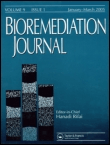
BIOREMEDIATION JOURNAL
Scope & Guideline
Exploring the Frontiers of Bioremediation for a Cleaner Tomorrow.
Introduction
Aims and Scopes
- Bioremediation Techniques:
Exploring various biological methods such as microbial bioremediation, phytoremediation, and mycoremediation to address soil, water, and air contamination. - Pollutant Types:
Researching the degradation or removal of a wide range of pollutants including heavy metals, organic compounds, dyes, and petroleum hydrocarbons. - Mechanistic Studies:
Investigating the biochemical and molecular mechanisms underlying pollutant degradation and resistance in microorganisms and plants. - Innovative Materials:
Developing and characterizing new biocomposite materials and bioadsorbents for enhanced pollutant removal. - Field and Laboratory Applications:
Conducting both laboratory-scale experiments and field trials to evaluate the practical applications of bioremediation techniques.
Trending and Emerging
- Microbial Consortia:
Increasing research into the use of mixed microbial communities for enhanced degradation capabilities, demonstrating synergistic effects in bioremediation processes. - Nanotechnology in Bioremediation:
Emerging studies on the use of nanomaterials and nanoparticles for improving the efficiency of bioremediation techniques, particularly in heavy metal removal. - Plant-Microbe Interactions:
A growing interest in understanding the interactions between plants and microbes for improved phytoremediation outcomes, including the role of endophytes. - Sustainable Practices:
Emphasis on sustainable bioremediation practices that not only detoxify pollutants but also enhance soil health and promote biodiversity. - In Silico Studies:
An increase in computational studies and modeling approaches to predict bioremediation efficiencies and optimize conditions for pollutant degradation.
Declining or Waning
- Traditional Chemical Remediation:
There is a noticeable decrease in studies focused solely on chemical remediation techniques, as the emphasis shifts toward biological and sustainable approaches. - Single Pollutant Studies:
Research concentrating on the remediation of single pollutants is becoming less common, with a trend towards addressing complex mixtures of contaminants. - Localized Studies:
The focus on localized or region-specific studies is waning, as global or multi-site comparative studies gain traction in the field.
Similar Journals
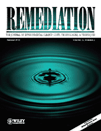
Remediation-The Journal of Environmental Cleanup Costs Technologies & Techniques
Advancing Environmental Solutions for a Cleaner TomorrowRemediation: The Journal of Environmental Cleanup Costs Technologies & Techniques is a pivotal publication in the field of environmental engineering, pollution management, and waste disposal. Published by Wiley since 1990, this journal has established itself as a significant resource for researchers and practitioners dedicated to environmental remediation technologies and cost-effective cleanup techniques. With an impressive scope that spans over three decades and continues to evolve until 2024, the journal is recognized for its valuable contributions, reflected in its Q2 ranking in key categories such as Environmental Engineering, Pollution, and Waste Management and Disposal. Although not currently open access, it offers critical insights and scholarly articles that adhere to rigorous peer-review standards, making it a leading forum for sharing innovative research and practical applications aimed at addressing environmental cleanup challenges. Positioned within the competitive landscape of Scopus rankings, it attracts attention from a global audience, ensuring that its findings resonate within academic, governmental, and industrial domains. Researchers, professionals, and students alike will find Remediation an indispensable tool for advancing knowledge and fostering collaboration in environmental sustainability.
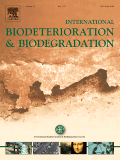
INTERNATIONAL BIODETERIORATION & BIODEGRADATION
Leading the way in biomaterials and microbiology studies.INTERNATIONAL BIODETERIORATION & BIODEGRADATION, published by Elsevier Science Ltd, is a prestigious peer-reviewed journal dedicated to the field of environmental science, particularly focusing on the biodegradation processes of materials and the bio-deterioration of various substances. With an ISSN of 0964-8305 and E-ISSN 1879-0208, this journal has established itself as a vital resource in areas such as biomaterials, microbiology, and waste management, holding a commendable Q2 ranking across multiple categories. Converging its studies from 1992 to 2025, it offers authors the opportunity to disseminate their research findings to a broad audience of researchers, professionals, and students committed to sustainability and environmental stewardship. The journal's impressive Scopus rankings reveal its significant impact within the academic community, with notable percentiles in both Waste Management and Microbiology. Although it does not offer open access options, the wealth of knowledge published within its pages is invaluable for advancing research and methodologies in bioremediation and waste management strategies.

ANTONIE VAN LEEUWENHOEK INTERNATIONAL JOURNAL OF GENERAL AND MOLECULAR MICROBIOLOGY
Exploring the Depths of Molecular MicrobiologyANTONIE VAN LEEUWENHOEK INTERNATIONAL JOURNAL OF GENERAL AND MOLECULAR MICROBIOLOGY, published by Springer, is a vital resource for advancing research in the fields of microbiology and molecular biology. With its ISSN 0003-6072 and E-ISSN 1572-9699, this journal consistently focuses on cutting-edge studies and developments, providing a platform for the dissemination of knowledge that spans over its rich history from 1934 onwards. The journal holds an impressive reputation, ranked Q2 in Medicine (miscellaneous) and Q3 in both Microbiology and Molecular Biology for 2023, reflecting its significant contribution to the scientific community. Researchers and professionals from various disciplines rely on this journal for quality publications that address complex microbial interactions and molecular mechanisms. Although it currently does not provide open access options, its compelling research remains accessible through institutional subscriptions, allowing it to foster collaborative advancements in the ever-evolving landscape of microbiological sciences.

BULLETIN OF ENVIRONMENTAL CONTAMINATION AND TOXICOLOGY
Championing the fight against environmental contamination.BULLETIN OF ENVIRONMENTAL CONTAMINATION AND TOXICOLOGY, published by SPRINGER, is a pivotal journal in the fields of Environmental Science, Toxicology, and Public Health. With a strong history of dissemination since its inception in 1966, the journal predominantly focuses on the latest advances in understanding environmental contaminants and their toxicological effects on health and ecosystems. It currently holds a respectable Q2 ranking across multiple categories including Health, Toxicology and Mutagenesis, Medicine (miscellaneous), and Pollution, as per the 2023 metrics. While the journal is not Open Access, it provides an invaluable platform for researchers, professionals, and students seeking to contribute to and stay informed on critical issues regarding environmental hazards and their implications. With an engaged community of scholars and practitioners, this journal continues to be an essential resource for addressing the pressing challenges of environmental contamination and its health impacts, guiding future research and policy decisions.

Journal of Hazardous Materials Letters
Advancing knowledge on hazardous materials for a safer tomorrow.Journal of Hazardous Materials Letters, published by ELSEVIER, is a premier open access journal that has rapidly gained prominence in the fields of Environmental Chemistry, Environmental Engineering, Health, Toxicology and Mutagenesis, Pollution, and Waste Management and Disposal since its inception in 2020. With an impressive categorization in the top quartile (Q1) across all its relevant disciplines in 2023, this journal ranks favorably within the Scopus database, positioning itself in the upper echelons of Environmental Science—ranked 23rd in Environmental Engineering and 19th in Health, Toxicology and Mutagenesis among its peers. It serves as a vital platform for the dissemination of high-quality research focused on addressing hazardous materials and their impacts on health and the environment. The journal's commitment to open access facilitates immediate and broad dissemination of research findings, ensuring that essential knowledge reaches a global audience of researchers, professionals, and students eager to advance the field. With its ongoing convergence into 2024, the Journal of Hazardous Materials Letters continues to drive innovation and influence practice in managing hazardous materials for a sustainable future.
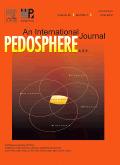
PEDOSPHERE
Unveiling the Secrets Beneath Our FeetPEDOSPHERE, published by SCIENCE PRESS, is a leading journal in the field of Soil Science, holding a prestigious position in the Q1 category as per the latest evaluations, reflecting its high impact and relevance in the domain. Established in 1996, this journal is committed to advancing our understanding of soil-related processes and their interactions with various environmental components, providing a platform for innovative and high-quality research. With an impressive rank of #13 out of 159 in the Scopus classifications for Agricultural and Biological Sciences, PEDOSPHERE reaches the 92nd percentile, indicating its significance among scholarly publications. Although the journal operates under traditional access options, it remains an essential resource for researchers, professionals, and students keen on exploring the complexities of soil dynamics and sustainability. By bridging interdisciplinary methodologies and fostering collaboration, PEDOSPHERE plays a vital role in addressing global challenges related to soil management, conservation, and ecological balance.

Journal of Xenobiotics
Pioneering research in environmental and biological systems.Journal of Xenobiotics, published by MDPI in Switzerland, is an esteemed open-access journal dedicated to advancing the understanding of xenobiotic substances and their impact on environmental health and biological systems. Since its inception in 2011, the journal has made significant strides in the field, earning a prestigious Q1 ranking across categories such as Pharmacology, Pollution, and Toxicology in 2023, showcasing its pivotal role in disseminating high-quality research. With its recent Scopus rankings reflecting a solid position in Environmental Science and Pharmacology disciplines, the journal serves as a vital platform for researchers, professionals, and students interested in the mechanisms and consequences of pollutants and toxic substances in various settings. The Journal of Xenobiotics continuously fosters open collaboration and knowledge exchange, allowing for inclusive dialogue on contemporary issues, making its articles readily accessible for the global scientific community.

Environmental Chemistry and Ecotoxicology
Advancing knowledge for a sustainable future.Environmental Chemistry and Ecotoxicology, published by KEAI PUBLISHING LTD, is a pioneering Open Access journal that has been at the forefront of research since its establishment in 2019. With an impressive trajectory that converges research excellence until 2024, the journal focuses on critical developments in the fields of environmental chemistry and ecotoxicology. It boasts a commendable market position, ranking in the top 3% among leading journals in Agricultural and Biological Sciences, Environmental Science, and related disciplines, as demonstrated by its high Scopus ranks. The journal is committed to disseminating groundbreaking research that addresses the pressing challenges of environmental sustainability and chemical safety, making it an essential resource for researchers, professionals, and students aiming to navigate the complexities of our ecological landscapes. By embracing an Open Access model, the journal ensures that valuable insights are accessible to a global audience, fostering collaboration and innovation in the field.
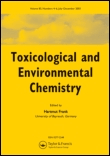
TOXICOLOGICAL AND ENVIRONMENTAL CHEMISTRY
Bridging toxicology and environmental science for a cleaner world.TOXICOLOGICAL AND ENVIRONMENTAL CHEMISTRY is a pivotal journal published by Taylor & Francis Ltd, addressing critical intersections between environmental chemistry and toxicology since its inception in 1979. With its ISSN 0277-2248 and E-ISSN 1029-0486, the journal serves as a platform for rigorous research and innovative methodologies in pollution control, health implications of environmental chemicals, and the broader spectrum of toxicological studies. Although it currently does not offer open access, the journal's impact in the field is underscored by its Category Quartiles rankings in 2023, placing it in Q3 across Environmental Chemistry, Health, Toxicology and Mutagenesis, and Pollution categories. Furthermore, its Scopus rankings reveal its significant role within the scientific community, specifically in areas such as Environmental Science and Toxicology. The journal aspires to foster multidisciplinary dialogue and advance knowledge that contributes to environmental sustainability and public health, making it an essential resource for researchers, professionals, and students dedicated to these fields.

ENVIRONMENTAL SCIENCE & TECHNOLOGY
Advancing sustainable solutions through innovative research.ENVIRONMENTAL SCIENCE & TECHNOLOGY, published by the American Chemical Society, is a premier journal dedicated to the rapid dissemination of innovative and impactful research in the fields of environmental science and technology. With an ISSN of 0013-936X and an E-ISSN of 1520-5851, this journal boasts a remarkable Q1 ranking across multiple categories including Chemistry (Miscellaneous), Environmental Chemistry, and Medicine (Miscellaneous) for 2023, reflecting its crucial role in advancing interdisciplinary approaches to pressing environmental issues. Notably, it holds prestigious Scopus rankings, being ranked #26 in General Chemistry and #10 in Environmental Chemistry, placing it in the top portions of its respective categories with unmatched visibility at the 93rd percentile. Spanning a publication history from 1967 to 2024, the journal serves as a vital resource for researchers, professionals, and students aiming to contribute to sustainable solutions and scientific advancements. By prioritizing rigor and relevance, ENVIRONMENTAL SCIENCE & TECHNOLOGY fosters academic dialogue and innovation within these crucial fields, making it an essential read for anyone invested in environmental progress.